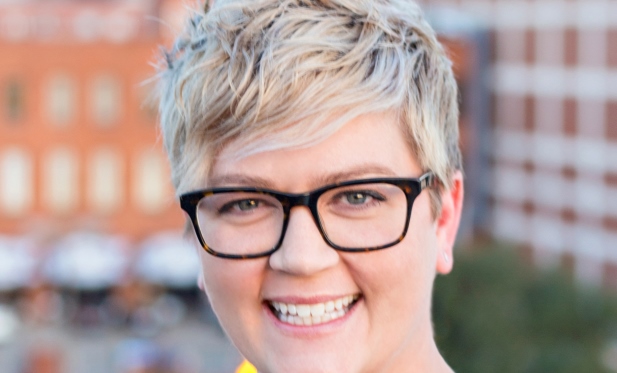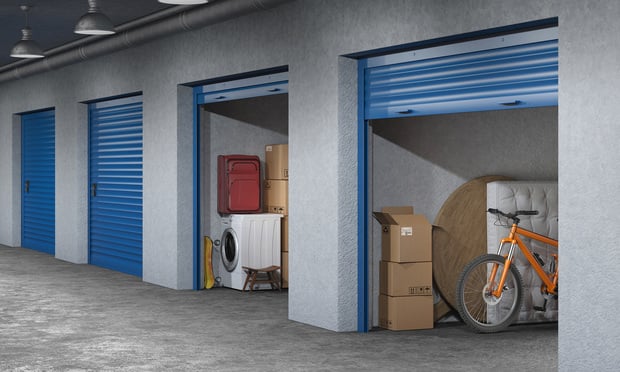
DALLAS—Whitney Hendrickson, interior designer, Perkins+Will, has a highly unique perspective on healthcare design…and career choices. When she worked as a registered nurse, she saw first-hand the effects of the built environment on the patients and staff in various healthcare environments.
Now, as an interior designer specializing in healthcare interiors in Perkins+Will's Dallas office, Hendrickson gets the chance to combine her passion for pediatric nursing and interest in healthcare planning and design into a blended career. She recently shared her insights into the connection between healthcare and design in the first of this two-part exclusive.
GlobeSt.com: Why and how did you make the career switch from nursing to design?
Hendrickson: As a pediatric bone marrow transplant nurse, I worked with such a vulnerable group of patients. It only took me a few years at the bedside to realize that I had a unique perspective that I wanted to share. Every day, I would notice how the environment affected my patients and their families: not enough storage, surfaces that were difficult to clean, no ability to personalize the space. I found myself constantly creating work-arounds for these issues, and trying to “humanize” the environment.
At the time, I was definitely craving a creative outlet, often decorating my coworkers' apartments on the weekends. I even had a part-time job at a furniture retailer. When I first made the decision to go back to school for interior design, I didn't necessarily think that I'd land back in the world of healthcare. But I found myself drawn to healthcare projects and realized my desire to help people hadn't gone away. Fast forward nine years, and I'm so grateful to be here.
GlobeSt.com: How has your nursing experience helped as a healthcare designer?
Hendrickson: I approach projects very analytically, and can be very systematic. The Type A part of me appreciates digging into the details and workflow of a project. Since I empathize with the patient and family, I can help tweak plans or re-work programs to better support family involvement, patient choice and access to nature, for example. I love connecting with users and helping to bring their voice to the design table.
Nurses are great at workarounds, so I enjoy analyzing their existing spaces, to help translate those needs to the design team. Working in acute care settings is hard. I love advocating for clinicians and giving them the same features that we know benefit patients. Clinicians aren't good at self-care, so I try to provide design elements and spaces of reprieve that make them feel human too.
How can things like color and lighting help the patient experience?
Hendrickson: Color and lighting seem obvious, but every detail can either positively or negatively affect the patient experience. Color is so personal for most people, so selecting something that will have longevity in a facility over 20 years can be a challenge. As designers, we try to concentrate color where it can be more easily updated as preferences change: particularly, in paint and fabrics.
Lighting is such a complicated component in healthcare. We think about worker eye strain, sensitive eyes of recovering patients, patients in transport who have to look directly up at the corridor ceiling, circadian rhythms (for staff and patients). I could go on forever. The biggest trend is control. Patients appreciate choice and the ability to change their lighting. Night shift employees need to have their work areas well lit, without light leaking into the patient room. Relying on our engineers and lighting experts definitely helps designers navigate complex lighting needs.

DALLAS—Whitney Hendrickson, interior designer, Perkins+Will, has a highly unique perspective on healthcare design…and career choices. When she worked as a registered nurse, she saw first-hand the effects of the built environment on the patients and staff in various healthcare environments.
Now, as an interior designer specializing in healthcare interiors in Perkins+Will's Dallas office, Hendrickson gets the chance to combine her passion for pediatric nursing and interest in healthcare planning and design into a blended career. She recently shared her insights into the connection between healthcare and design in the first of this two-part exclusive.
GlobeSt.com: Why and how did you make the career switch from nursing to design?
Hendrickson: As a pediatric bone marrow transplant nurse, I worked with such a vulnerable group of patients. It only took me a few years at the bedside to realize that I had a unique perspective that I wanted to share. Every day, I would notice how the environment affected my patients and their families: not enough storage, surfaces that were difficult to clean, no ability to personalize the space. I found myself constantly creating work-arounds for these issues, and trying to “humanize” the environment.
At the time, I was definitely craving a creative outlet, often decorating my coworkers' apartments on the weekends. I even had a part-time job at a furniture retailer. When I first made the decision to go back to school for interior design, I didn't necessarily think that I'd land back in the world of healthcare. But I found myself drawn to healthcare projects and realized my desire to help people hadn't gone away. Fast forward nine years, and I'm so grateful to be here.
GlobeSt.com: How has your nursing experience helped as a healthcare designer?
Hendrickson: I approach projects very analytically, and can be very systematic. The Type A part of me appreciates digging into the details and workflow of a project. Since I empathize with the patient and family, I can help tweak plans or re-work programs to better support family involvement, patient choice and access to nature, for example. I love connecting with users and helping to bring their voice to the design table.
Nurses are great at workarounds, so I enjoy analyzing their existing spaces, to help translate those needs to the design team. Working in acute care settings is hard. I love advocating for clinicians and giving them the same features that we know benefit patients. Clinicians aren't good at self-care, so I try to provide design elements and spaces of reprieve that make them feel human too.
How can things like color and lighting help the patient experience?
Hendrickson: Color and lighting seem obvious, but every detail can either positively or negatively affect the patient experience. Color is so personal for most people, so selecting something that will have longevity in a facility over 20 years can be a challenge. As designers, we try to concentrate color where it can be more easily updated as preferences change: particularly, in paint and fabrics.
Lighting is such a complicated component in healthcare. We think about worker eye strain, sensitive eyes of recovering patients, patients in transport who have to look directly up at the corridor ceiling, circadian rhythms (for staff and patients). I could go on forever. The biggest trend is control. Patients appreciate choice and the ability to change their lighting. Night shift employees need to have their work areas well lit, without light leaking into the patient room. Relying on our engineers and lighting experts definitely helps designers navigate complex lighting needs.
Want to continue reading?
Become a Free ALM Digital Reader.
Once you are an ALM Digital Member, you’ll receive:
- Breaking commercial real estate news and analysis, on-site and via our newsletters and custom alerts
- Educational webcasts, white papers, and ebooks from industry thought leaders
- Critical coverage of the property casualty insurance and financial advisory markets on our other ALM sites, PropertyCasualty360 and ThinkAdvisor
Already have an account? Sign In Now
*May exclude premium content© 2025 ALM Global, LLC, All Rights Reserved. Request academic re-use from www.copyright.com. All other uses, submit a request to [email protected]. For more information visit Asset & Logo Licensing.








